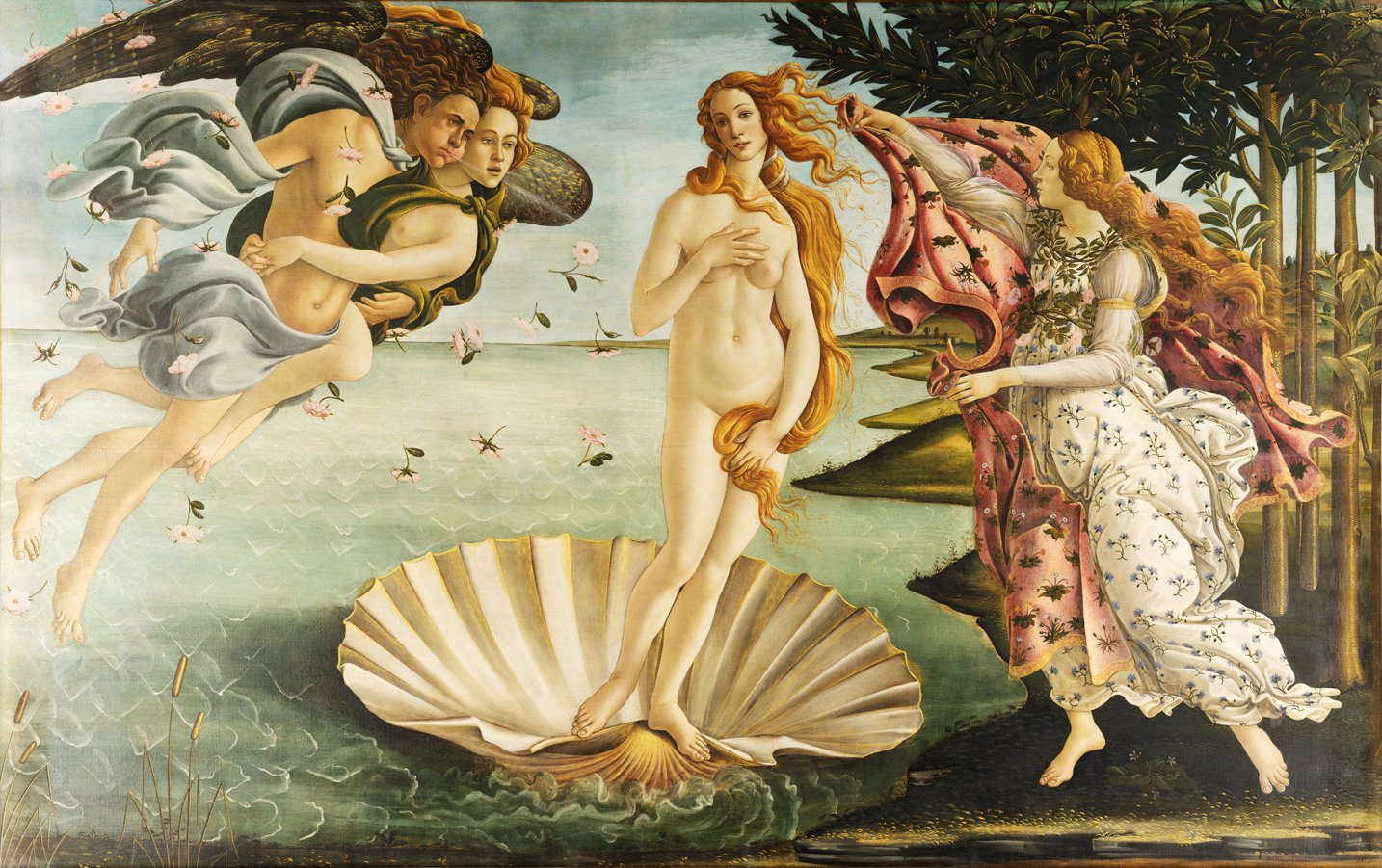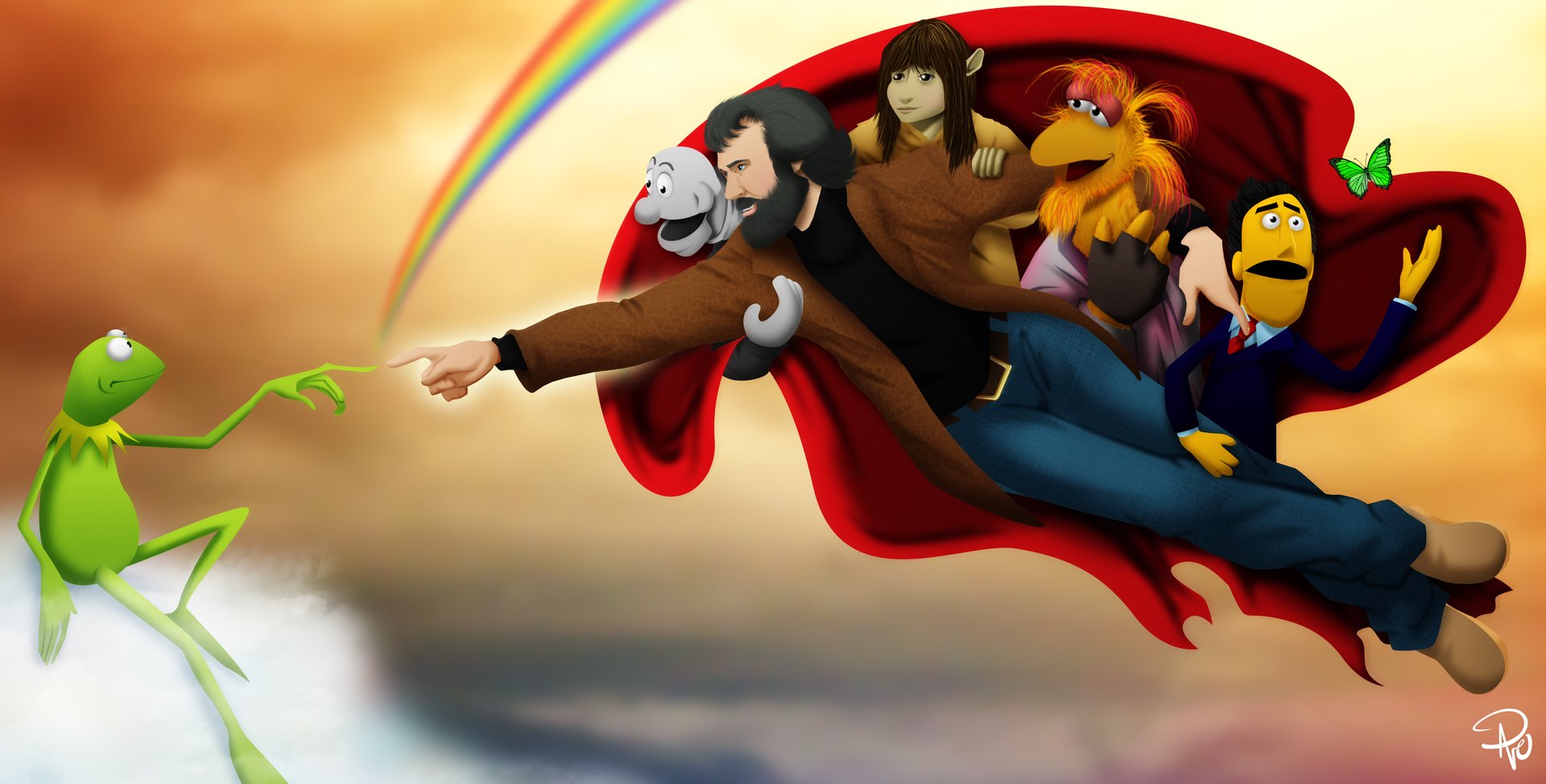Last week I showed off my own takes on famous works of art along with a bunch of fun tidbits about the originals as well. Recreating, parodying, and re–imagining such works is a fantastic way to learn from master artists, get educated on their history, and (arguably most importantly) shatter creative blocks! So make sure you check out part I if you haven’t already! Now, onto part II.
American Gothic
Grant Wood
1930
Oil on beaverboard
Grant’s original, and my own (Procreate digital painting, 2023)
Perhaps you've already heard some fun facts about this one. For example, the two people (looking super excited to be there, by the way) are not wife and husband, but rather daughter and father. Or maybe that—while they look like farmers—the models are actually the artist's sister and their dentist. A more unfamiliar tidbit is that the actual inspiration for the artwork and its namesake come from the house behind the pair. As the story goes, Wood was in Eldon, Iowa cruising for his own creative spark when he saw the house which he thought was "very paintable" despite (or possibly because of) the absurdity of having "a Gothic–style window in such a flimsy frame house."
Arrangement in Grey and Black No. 1
James Abbott McNeill Whistler
1871
Oil on Canvas
Whistler’s original, and my own (Vector art, 2013)
There's a nuanced story behind this one, primarily centered on several key things that you've probably questioned just from the painting and title alone, and even more so if you're familiar with this one even just a little bit.
1. The Title
Most people know this painting as Whistler's Mother, and you're right (colloquially). This is in fact a painting of James' mom. There's some speculation as to whether or not the artist's mother was supposed to be the original subject and why she's sitting down, but it's official title implies there's more than one painting (and there is, but like many sequels, the original gets retitled retroactively after part 2 drops).
2. The Artist
Whistler was an American based in the United Kingdom, and did not care at all for his British critics. So he found great delight when it became so celebrated by the French. In fact, it's one of the most famous American paintings outside of America and has the distinction of being recognized as a Victorian Mona Lisa.
3. The Icon
This painting is everywhere. The original of course remains in Paris, but you've seen it in movies, commercials, cartoons, books, television, and in music too. In fact, the first time I ever saw the iconic image was in Miss Piggy's Art Masterpiece 1983 Calendar as Whistler's Weirdo featuring Gonzo. Art historian Martha Tedeschi summed pretty much everything I've written about today best when she stated, "Whistler's Mother, Wood's American Gothic, Leonardo da Vinci's Mona Lisa and Edvard Munch's The Scream have all achieved something that most paintings—regardless of their art historical importance, beauty, or monetary value—have not: they communicate a specific meaning almost immediately to almost every viewer. These few works have successfully made the transition from the elite realm of the museum visitor to the enormous venue of popular culture."
Salvator Mundi
Leonardo DaVinci
c. 1499–1510
Oil on walnut panel
Ooh, get ready for some speculation! But first, here are the facts: the painting depicts Christ making the sign of the cross with his right hand, while holding a transparent, non-refracting crystal orb in his left (put a pin in that for a moment), signaling his role as Salvator Mundi (Latin for 'Savior of the World'). It is also the most expensive painting ever sold at public auction for 450 million smackaroos. Now let's get gossipy! It is attributed to DaVinci for a couple reasons: a bunch of copies and variations by students and followers of Leo have been identified, and there are two prepatory chalk drawings of the drapery by DaVinci. What initially threw everyone off the trail was that the painting was thought to have been destroyed or lost in 1603, but was rediscovered in 1978 and thought to be a copy of a lost original veiled with overpainting (in other words, someone painted over the original either to make it their own like ya' boy here is doin' or they tried to restore it). Now most art historians have concluded the hidden painting beneath is Leonardo's work—it's superior to whoever painted over it, and meets perfectionist standards only the Renaissance Man himself could achieve. A few other art historians say Leonardo definitely helped, but the composition is a little blasé and not his style. Also, there's no documentation in Leonardo's records that he was the artist for it. And finally, there's disagreement as to whether the orb Jesus is holding would be painted more realistically (something DaVinci would have been more than capable of and known for doing) or that he purposefully pulled back the realism so as not to distract from J.C.
Pencil Sketch (of Gene Barretta) 2014, vector art 2016, and Procreate digital painting 2023
Regardless, this was a piece I stumbled on to simply because I was looking for hand studies surrounding what I was calling the "Catholic blessing" pose. I had not encountered the celestial globe version until Salvator Mundi. DaVinci was a master—especially with hands—and this is a fantastic example if you're looking for a challenge.
Honorable Mentions
Vitruvian Man (DaVinci 1490), Sistine Madonna (Raphael, c. 1513–1514), Lady at the Tea Table (Mary Cassatt, 1883–85)
The Vitruvian Man by DaVinci (1490) is rarely on display due to its light sensitivity. Most people are familiar with Raphael’s two angels (actually called putti, c. 1513–1514) but they’re part of a much larger painting called Sistine Madonna. Lady at the Tea Table by Mary Cassatt (1883–85) was donated to the Metropolitan Museum of Art by the artist as the daughter of the subject of the painting thought her mom’s nose looked too big.
Vitruvian Beaker (Traditional & Digital mixed media, 2009), Bang & Bump Valentine’s Day Post (Vector art, 2015), Inktober (Bimoji Brush pen on bristol board with digital touch–up, 2018)
The Birth of Venus
Sandro Botticelli
c. 1484–1486
Tempera on canvas
For the cultured and refined, this masterpiece is an icon of Italian Renaissance painting. For the rest of us, one may hear the voice of Carl Carlson from The Simpsons ask, "Whats the matter Homer? Ain’t ya never seen a naked chick riding a clam before?" But what's actually going on here? The painting represents a traditional scene from Greek mythology. The wind god Zephyrus and Aura (the personification of a lighter breeze) blow a newborn goddess Venus floating on a giant scallop shell over to the shore where Flora—one of the Hora of Spring (minor goddess of the seasons)—waits to put a robe over Venus. Large depictions of scenes and subjects from classic mythology were unprecedented at the time, so it's speculated this piece was privately commissioned.
Procreate digital painting 2023
Of all my takes on famous artworks, I put the most time and effort into this one. Creating my own nondescript Whatnot/Anything Muppets is always fun, and for a piece like this, I get to really practice my digital painting chops.
I hope you enjoyed my own takes on these famous artworks, but I really hope you learned some fun things about the originals that inspired them! What are your favorite pieces of famous art? Have you ever tried your own study of them? Follow me on Instagram and Twitter and let me know!




















